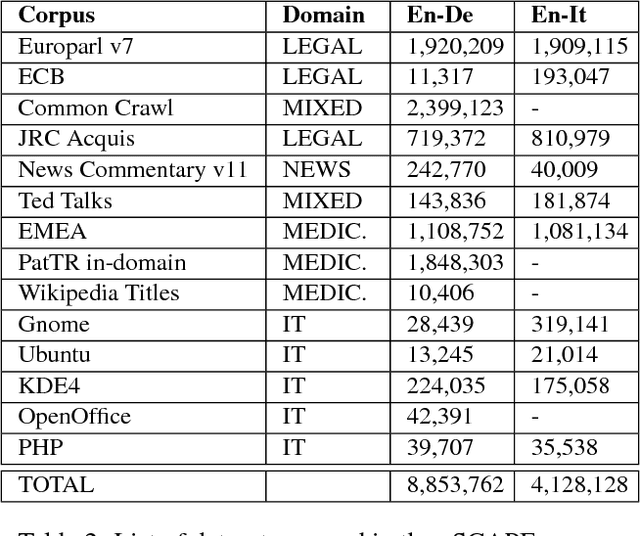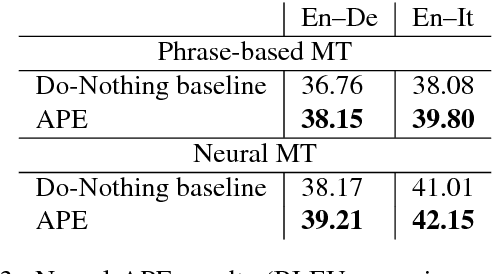eSCAPE: a Large-scale Synthetic Corpus for Automatic Post-Editing
Paper and Code
Mar 20, 2018


Training models for the automatic correction of machine-translated text usually relies on data consisting of (source, MT, human post- edit) triplets providing, for each source sentence, examples of translation errors with the corresponding corrections made by a human post-editor. Ideally, a large amount of data of this kind should allow the model to learn reliable correction patterns and effectively apply them at test stage on unseen (source, MT) pairs. In practice, however, their limited availability calls for solutions that also integrate in the training process other sources of knowledge. Along this direction, state-of-the-art results have been recently achieved by systems that, in addition to a limited amount of available training data, exploit artificial corpora that approximate elements of the "gold" training instances with automatic translations. Following this idea, we present eSCAPE, the largest freely-available Synthetic Corpus for Automatic Post-Editing released so far. eSCAPE consists of millions of entries in which the MT element of the training triplets has been obtained by translating the source side of publicly-available parallel corpora, and using the target side as an artificial human post-edit. Translations are obtained both with phrase-based and neural models. For each MT paradigm, eSCAPE contains 7.2 million triplets for English-German and 3.3 millions for English-Italian, resulting in a total of 14,4 and 6,6 million instances respectively. The usefulness of eSCAPE is proved through experiments in a general-domain scenario, the most challenging one for automatic post-editing. For both language directions, the models trained on our artificial data always improve MT quality with statistically significant gains. The current version of eSCAPE can be freely downloaded from: http://hltshare.fbk.eu/QT21/eSCAPE.html.
 Add to Chrome
Add to Chrome Add to Firefox
Add to Firefox Add to Edge
Add to Edge